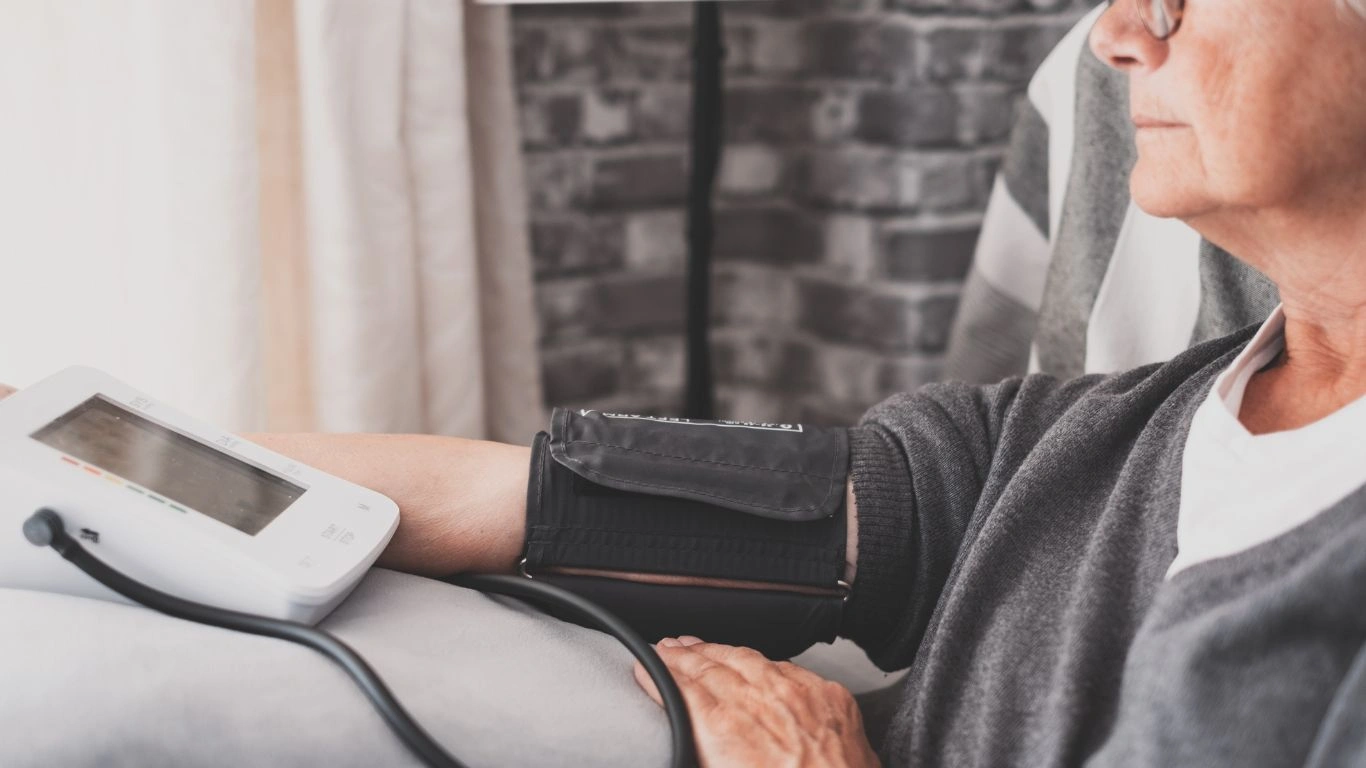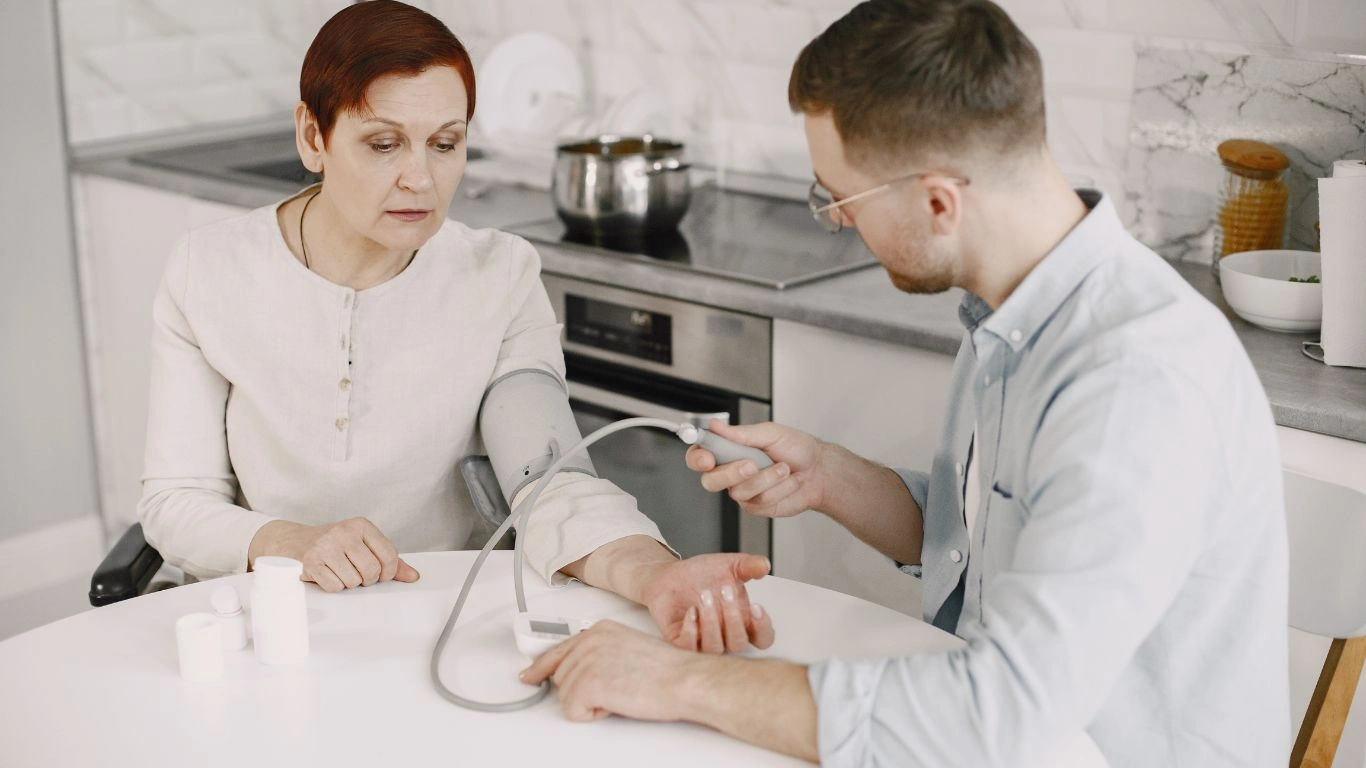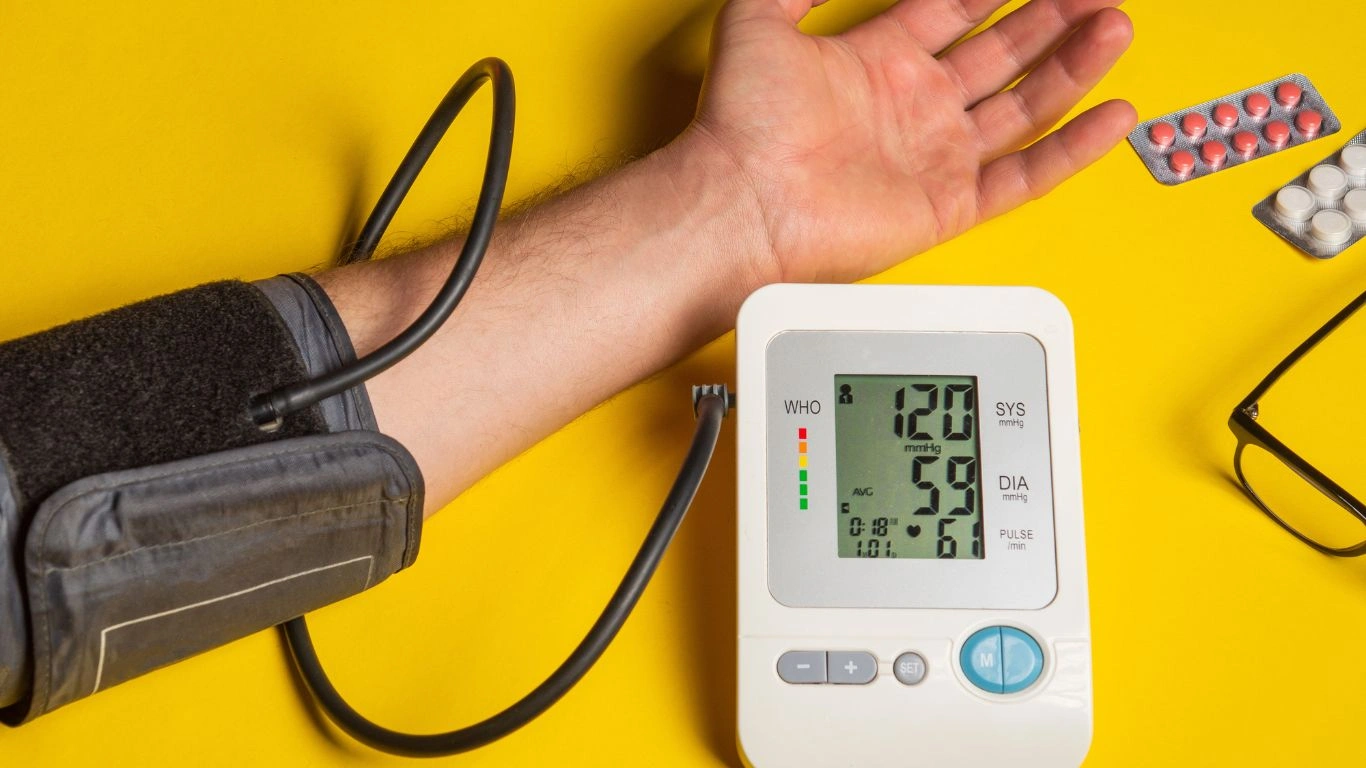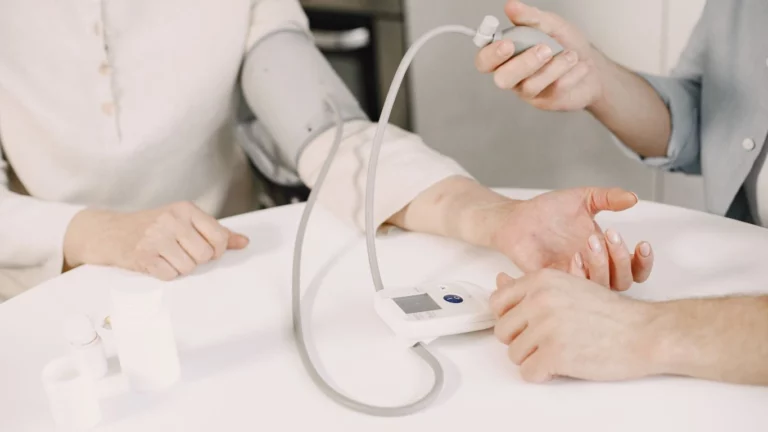How Iron Deficiency Affects Blood Pressure and Heart Health – What You Need to Know
As an internal medicine physician specializing in hypertension management, I’ve encountered a surprising number of patients who, despite controlling their blood pressure, continue to struggle with their overall health. One common factor that I’ve found plays a significant role in these cases is iron deficiency. You might be wondering, “How can something like low iron levels possibly affect blood pressure?” It turns out that the relationship between iron and blood pressure is more complicated than many realize. In fact, iron deficiency can have a profound impact on blood pressure levels, and understanding how it works can help us manage both conditions more effectively.
What Is Iron Deficiency?
Before diving into how iron deficiency affects blood pressure, let’s take a quick look at what iron deficiency actually is. Iron is an essential mineral in our body that plays a key role in producing hemoglobin—the protein in red blood cells responsible for carrying oxygen throughout the body. When our body doesn’t get enough iron, we develop what’s known as iron deficiency, which can lead to a range of symptoms from fatigue and weakness to pale skin and dizziness. But iron deficiency isn’t just about feeling tired; it can also have serious implications on your cardiovascular health.

How Does Iron Deficiency Affect Blood Pressure?
You might be surprised to learn that iron deficiency can lead to both high and low blood pressure, though the mechanisms behind each are a bit different. Let me break it down.
Iron Deficiency and High Blood Pressure
At first glance, it may seem counterintuitive that low iron levels could cause high blood pressure. After all, most people associate hypertension with factors like salt, stress, or obesity. But here’s the thing—iron is crucial for the proper function of many body systems, including those that regulate blood pressure. When there’s a shortage of iron, the body can struggle to produce enough red blood cells. This leads to a condition called anemia, which, in turn, can trigger compensatory mechanisms that increase blood pressure.
One of these compensatory mechanisms involves the release of more of a hormone called renin, which helps regulate blood pressure. When iron is low, the body can overproduce renin, causing the blood vessels to constrict and ultimately raising blood pressure. This is one of the reasons why some of my patients with iron deficiency end up with elevated blood pressure despite seemingly following a healthy lifestyle.
Iron Deficiency and Low Blood Pressure
On the flip side, iron deficiency can also contribute to low blood pressure (hypotension). When iron levels drop too low, it impacts the body’s ability to produce hemoglobin and red blood cells, which are responsible for carrying oxygen to organs and tissues. With insufficient red blood cells, the heart has to pump harder to distribute oxygen, which can lead to low blood pressure, dizziness, or even fainting. I’ve had patients who experienced these symptoms and didn’t realize that their iron levels were the culprit. The connection between low iron and low blood pressure isn’t always obvious, but it’s something I always check for in patients with unexplained fatigue or dizziness.

The Link Between Iron Deficiency and Heart Health
We can’t talk about iron deficiency and blood pressure without considering the broader impact on heart health. Iron is essential for maintaining a healthy cardiovascular system, and when there isn’t enough of it, the heart can experience extra strain. Iron deficiency anemia increases the heart’s workload by making it work harder to circulate oxygenated blood throughout the body. This not only affects blood pressure but can also increase the risk of other heart problems, such as arrhythmias (irregular heartbeats) or even heart failure if left untreated.
In my practice, I often see patients who have both hypertension and iron deficiency, and managing both conditions together can be tricky. However, with proper treatment, including iron supplementation and blood pressure medication, it’s definitely possible to improve both outcomes.
Common Symptoms of Iron Deficiency You Should Watch For
If you’re wondering whether you might have iron deficiency (and if it could be affecting your blood pressure), here are some symptoms to look out for:
- Fatigue and feeling weak, especially during physical activity
- Paleness of the skin or the inside of your eyelids
- Shortness of breath or dizziness during routine activities
- Heart palpitations or irregular heartbeats
- Cold hands and feet or a general feeling of being cold
- Headaches that won’t go away
If any of these symptoms sound familiar, it may be time to speak with your doctor about getting your iron levels tested. Blood tests can reveal if you’re deficient and guide the best treatment approach.

Managing Iron Deficiency and Blood Pressure Together
As someone who regularly manages hypertension, I can tell you that treating iron deficiency isn’t just about taking a pill. It’s about creating a comprehensive plan that addresses both conditions at once. This often involves a combination of dietary changes (like eating iron-rich foods such as spinach, beans, and red meat), possibly taking iron supplements, and carefully managing blood pressure with medications when necessary.
But, of course, what works for one person might not work for another, which is why a personalized approach is key. If you suspect that iron deficiency might be affecting your blood pressure, don’t hesitate to talk to your healthcare provider. They can help you determine the most effective treatment plan tailored to your needs and lifestyle.
Dietary Considerations for Managing Iron Deficiency and Blood Pressure
As a physician focused on hypertension management, I often find that many of my patients overlook the importance of diet when it comes to both their iron levels and blood pressure. The food you eat can play a major role in managing both conditions. A well-balanced diet can help increase iron absorption, keep your blood pressure stable, and even lower the risk of developing other cardiovascular issues. Let’s dive into some practical dietary tips for managing iron deficiency and blood pressure together.

Iron-Rich Foods That Help
When it comes to tackling iron deficiency, the first place to start is with your diet. Foods rich in iron can make a significant difference in boosting your iron levels and improving overall health. The key is to include a mix of both heme iron (found in animal products) and non-heme iron (found in plant-based foods).
- Red meat such as beef, lamb, and liver is an excellent source of heme iron. But I always recommend balancing this with other sources to avoid the health risks associated with red meat consumption.
- Dark leafy greens like spinach, kale, and swiss chard provide a great plant-based source of non-heme iron. Pair them with a vitamin C source to boost absorption!
- Legumes such as beans, lentils, and chickpeas are rich in non-heme iron and are an excellent alternative for those following a vegetarian or vegan diet.
- Nuts and seeds, especially pumpkin seeds, sesame seeds, and cashews, are packed with iron and also provide healthy fats.
- Fortified cereals and grains can also help, especially if you’re concerned about getting enough iron from natural sources alone.
In my practice, I often suggest that patients aim for a mix of these foods throughout the week. This helps ensure that they’re not only addressing their iron deficiency but also boosting their overall nutritional intake, which can have positive effects on blood pressure too.
Vitamin C and Iron Absorption
When talking about iron-rich foods, I always remind my patients about the importance of vitamin C. This vitamin plays a critical role in increasing the absorption of non-heme iron (the type found in plant-based foods). If you’re eating iron-rich foods like spinach or beans, pairing them with a source of vitamin C can double the benefits.
For instance, adding a little citrus to your meal—like a squeeze of lemon on your spinach salad or a handful of strawberries with your beans—can make a world of difference. And don’t forget about bell peppers, tomatoes, or broccoli—these are also great sources of vitamin C and can help your body make the most of the iron you’re consuming.

How to Avoid Iron Inhibitors
While it’s important to eat iron-rich foods, it’s equally crucial to be aware of iron inhibitors—certain foods or substances that can block iron absorption. I’ve had many patients tell me they’ve been eating the right foods but still struggle with low iron levels, and in many cases, the issue lies in what they’re drinking or consuming alongside their meals.
Caffeine and Iron Absorption
Caffeine is a big culprit here. I often see patients drinking coffee or tea with meals, and they don’t realize that the tannins and polyphenols in these drinks can inhibit iron absorption. If you’re struggling with low iron levels, I recommend avoiding coffee or tea right around mealtime. Instead, try having your coffee or tea between meals and not directly with your meals.
This small shift can make a significant difference in the effectiveness of your iron intake. Don’t get me wrong—coffee and tea have health benefits, but timing is everything when you’re trying to boost your iron levels.
Calcium and Iron Interference
Another common iron inhibitor is calcium. While calcium is essential for bone health, it can interfere with the absorption of iron when consumed in large amounts, particularly from dairy products. I usually advise my patients to space out their intake of calcium-rich foods and iron-rich meals by a couple of hours. This ensures that calcium doesn’t compete with iron for absorption.
So, instead of loading up on a large glass of milk with your iron-packed dinner, try having your dairy at a different time of day—perhaps as a snack in between meals.
Iron Supplements: When and How to Use Them
In some cases, even with dietary changes, iron deficiency can be stubborn. That’s when we turn to iron supplements. But before you rush to the pharmacy and pick up an over-the-counter bottle of iron pills, let’s talk about when and how to use them properly. As an internal medicine physician, I’ve seen many patients who either take iron supplements improperly or without guidance, which can lead to unwanted side effects like constipation or stomach irritation.
Choosing the Right Iron Supplement
There are several types of iron supplements available, and the best one for you may depend on your specific needs. The two main types are ferrous sulfate and ferrous gluconate, with ferrous sulfate being the most commonly prescribed. However, ferrous gluconate is often a gentler option on the stomach.
In my practice, I always assess whether my patients are taking the right form of supplement and whether they need additional help absorbing the iron. Some people may benefit from taking a supplement that includes vitamin C, which helps improve iron absorption, while others might need a slower-release form to minimize stomach upset.
Timing and Dosage Matters
When it comes to taking iron supplements, timing is key. I generally recommend taking iron supplements on an empty stomach, as this increases absorption. However, if it causes nausea, it’s okay to take it with food. Also, keep in mind that taking too much iron can be harmful, so it’s always important to follow the dosage prescribed by your doctor and not self-medicate.
It’s also worth noting that iron supplements can interact with certain medications, especially those used to treat high blood pressure, like ACE inhibitors or calcium channel blockers. If you’re on any of these medications, it’s critical to talk to your healthcare provider before starting an iron supplement regimen.

Managing Iron Deficiency in Special Populations
Certain groups of people are at higher risk for iron deficiency, and managing both iron levels and blood pressure can be particularly challenging in these cases. For instance, pregnant women, older adults, and individuals with chronic conditions like gastrointestinal disorders or heart disease may need special consideration when it comes to iron deficiency and blood pressure management.
Pregnancy and Iron Deficiency
During pregnancy, iron requirements increase significantly due to the growing baby and the increased blood volume. If you’re pregnant and struggling with both low iron and high blood pressure, it’s especially important to work closely with your doctor. In many cases, pregnancy-related hypertension (such as preeclampsia) can be influenced by iron deficiency, and addressing this can help reduce risks for both mother and child.
Managing both iron deficiency and hypertension in pregnant women requires careful monitoring, including regular blood tests and tailored iron supplementation. Your doctor will help you find the right balance between maintaining healthy iron levels and controlling blood pressure.
Iron Deficiency and Blood Pressure: What You Need to Know for Long-Term Health
In this final section, we’ll wrap up our conversation about the surprising connection between iron deficiency and blood pressure. As an internal medicine physician, I’ve worked with many patients who were unaware of the interplay between these two conditions. Even with all the information we’ve covered so far, it’s important to highlight the ongoing management and monitoring required to maintain both healthy iron levels and stable blood pressure. Managing these factors is a long-term commitment, and with the right approach, you can absolutely improve both.

Regular Monitoring: Key to Managing Both Conditions
If you’re dealing with iron deficiency and blood pressure issues, monitoring is a crucial part of the equation. In my practice, I can’t stress enough how important it is to regularly check your iron levels, blood pressure, and overall health status. If you’re being treated for one condition, the treatment plan for the other may also need adjustments over time. It’s essential to keep those regular follow-up appointments with your healthcare provider to track your progress and tweak your treatment plan as needed.
For instance, once iron supplementation starts working, your iron levels will likely improve, but it’s important to check that your blood pressure doesn’t fluctuate too much as your body adjusts. Sometimes, iron deficiency treatment can impact the medication dosage you’re on for hypertension, so it’s not a one-size-fits-all scenario. It’s a bit of a balancing act, but with regular monitoring, we can usually find the right rhythm for your health.
When to Seek Professional Help
While managing iron deficiency and blood pressure on your own through diet and lifestyle changes is important, there are times when seeking professional help is necessary. If you’re noticing symptoms like ongoing fatigue, dizziness, persistent headaches, or changes in your blood pressure readings despite dietary adjustments or medication, it’s time to check in with your doctor. Some signs could indicate that your current treatment approach isn’t working as well as it should be or that there’s an underlying issue that needs to be addressed.
I’ve had patients who were taking iron supplements but still weren’t seeing improvements in their symptoms, only to find out that their iron supplements were not being absorbed properly due to other medications or gastrointestinal issues. Others may need more specialized blood tests to assess for conditions like chronic inflammation or malabsorption syndromes, which could affect both iron and blood pressure regulation.
Exercise and Lifestyle: The Role of Physical Activity
When we talk about blood pressure and iron deficiency, we can’t forget the role of exercise. Regular physical activity is one of the best ways to naturally manage your blood pressure, and it can also improve your iron status by promoting healthy circulation and helping with the absorption of nutrients. However, there are a few things to keep in mind when it comes to exercise.
The Best Type of Exercise for Blood Pressure and Iron Levels
When you’re dealing with high blood pressure and low iron, it’s important to choose an exercise routine that is both gentle and effective. For example, moderate aerobic exercises like walking, swimming, and cycling are fantastic choices because they help lower blood pressure without overtaxing your system. These activities can improve your circulation, boost red blood cell production, and support heart health. I always encourage my patients to aim for at least 30 minutes of moderate exercise most days of the week.
On the other hand, if you’re dealing with iron deficiency and you’re feeling fatigued or weak, high-intensity exercise may not be the best choice until you’ve addressed your iron levels. Start slow, and listen to your body. Once your iron levels improve, you can gradually increase the intensity of your workouts and reap even more benefits for your cardiovascular health.
The Importance of Rest and Recovery
It’s not just about exercise, though—rest and recovery are equally important when you’re managing both iron deficiency and blood pressure. Your body needs time to recover after physical activity, and this is particularly crucial when you’re dealing with anemia. Without sufficient rest, your body won’t be able to rebuild its iron stores or maintain balanced blood pressure levels.
For many patients I see, taking the time to incorporate more restful activities, like stretching, meditation, or gentle yoga, helps them feel more energized and balanced. It’s about finding that sweet spot where your body can rest enough to recover from exertion but also stay active enough to help regulate blood pressure and boost iron absorption.

Understanding the Long-Term Risks
While the immediate symptoms of iron deficiency and high blood pressure may seem manageable with the right approach, it’s important to think long-term. Iron deficiency, when left untreated, can lead to serious complications like heart failure, chronic fatigue, and even cognitive issues due to the brain’s reduced oxygen supply. Similarly, uncontrolled high blood pressure can cause long-term damage to the heart, kidneys, and blood vessels. When both conditions coexist, the risks increase, which is why early detection and long-term management are so critical.
The Impact on Your Heart
We’ve touched on how iron deficiency can strain the heart, but I want to emphasize just how important it is to address both iron levels and blood pressure to prevent long-term heart damage. Both conditions can place undue stress on the cardiovascular system, leading to an increased risk of developing heart disease, arrhythmias, and even heart failure. In my practice, I’ve seen how addressing one condition without the other can still lead to complications. For example, treating high blood pressure while ignoring iron deficiency may improve blood pressure but could still leave a patient feeling tired or at risk for cardiovascular events.
So, while managing these conditions may require some patience and attention to detail, the rewards of getting it right—improved energy levels, better heart health, and overall well-being—are worth the effort. Whether it’s through diet, exercise, medication, or regular monitoring, you can achieve a balanced approach to managing both iron deficiency and blood pressure.
References
For further reading and resources on managing iron deficiency and blood pressure, check out these trusted sources:
- Mayo Clinic: Iron deficiency and heart health
- American Heart Association: Managing blood pressure
- Centers for Disease Control and Prevention: Iron deficiency guidelines
Disclaimer
The information provided in this article is for educational purposes only and should not be considered medical advice. Please consult with a healthcare provider before making any changes to your diet, exercise routine, or medication regimen. Always follow the guidance of a qualified professional when managing your health conditions.

Dr. Gwenna Aazee is a board-certified Internal Medicine Physician with a special focus on hypertension management, chronic disease prevention, and patient education. With years of experience in both clinical practice and medical writing, she’s passionate about turning evidence-based medicine into accessible, actionable advice. Through her work at Healthusias.com, Dr. Aazee empowers readers to take charge of their health with confidence and clarity. Off the clock, she enjoys deep dives into nutrition research, long walks with her rescue pup, and simplifying medical jargon one article at a time.






